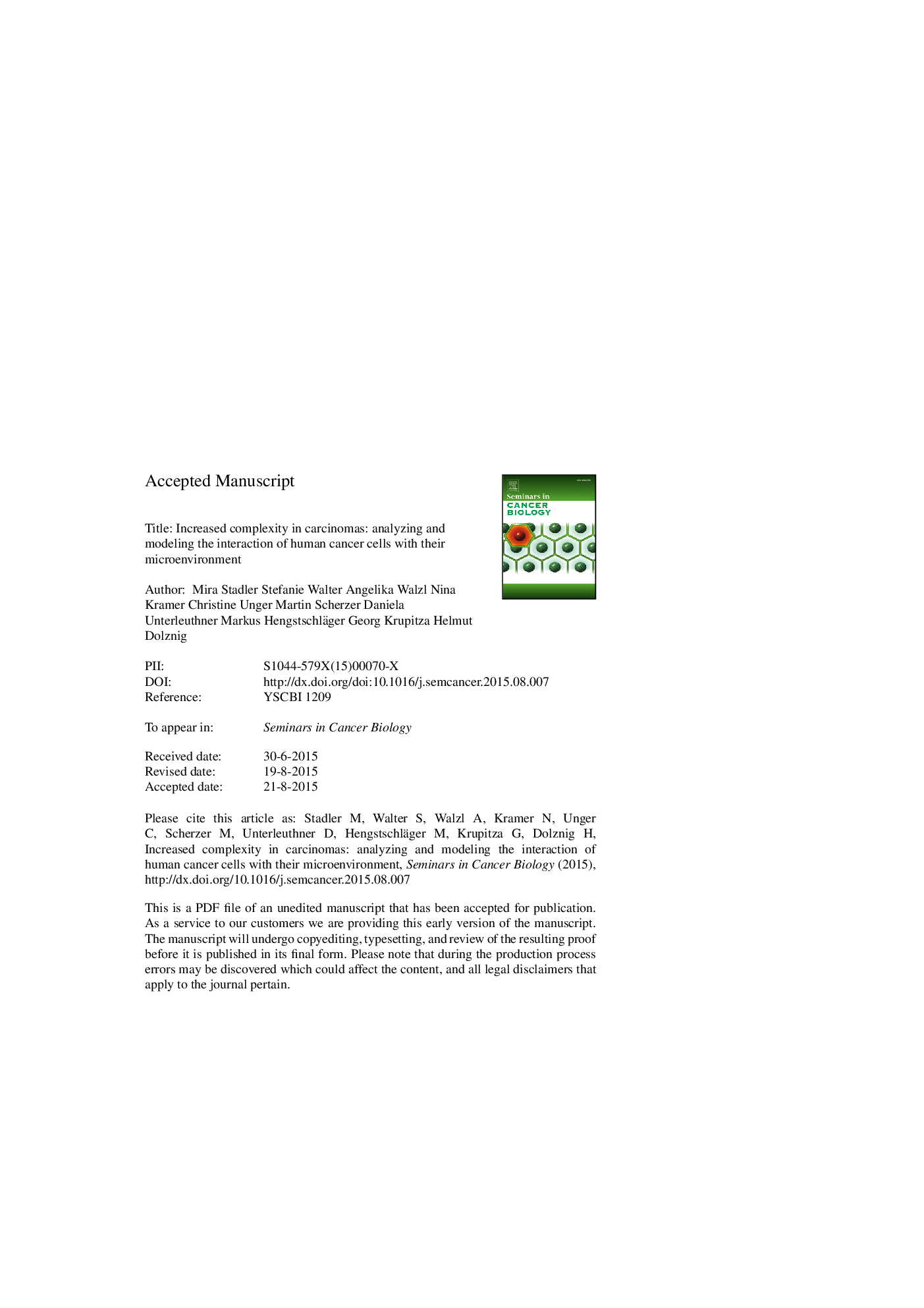| Article ID | Journal | Published Year | Pages | File Type |
|---|---|---|---|---|
| 8362158 | Seminars in Cancer Biology | 2015 | 50 Pages |
Abstract
Solid cancers are not simple accumulations of malignant tumor cells but rather represent complex organ-like structures. Despite a more chaotic general appearance as compared to the highly organized setup of healthy tissues, cancers still show highly differentiated structures and a close interaction with and dependency on the interwoven connective tissue. This complexity within cancers is not known in detail at the molecular level so far. The first part of this article will shortly describe the technology and strategies to quantify and dissect the heterogeneity in human solid cancers. Moreover, there is urgent need to better understand human cancer biology since the development of novel anti-cancer drugs is far from being efficient, predominantly due to the scarcity of predictive preclinical models. Hence, in vivo and in vitro models were developed, which better recapitulate the complexity of human cancers, by their intrinsic three-dimensional nature and the cellular heterogeneity and allow functional intervention for hypothesis testing. Therefore, in the second part 3D in vitro cancer models are presented that analyze and depict the heterogeneity in human cancers. Advantages and drawbacks of each model are highlighted and their suitability to preclinical drug testing is discussed.
Related Topics
Life Sciences
Biochemistry, Genetics and Molecular Biology
Biochemistry
Authors
Mira Stadler, Stefanie Walter, Angelika Walzl, Nina Kramer, Christine Unger, Martin Scherzer, Daniela Unterleuthner, Markus Hengstschläger, Georg Krupitza, Helmut Dolznig,
